Pharmaceutical packaging plays an important role in product storage and transportation. Different packaging has various functions. A clear understanding helps you deal with your products better.
Why is pharmaceutical packaging important?
Pharma packaging keeps medicines safe and effective. It protects products from moisture, light, and contamination. It also features accurate dose control for each medicine, and customers can take it easily. Compact packaging makes medicines easier to carry, store, and use. From blister packs to bottles, different types of packaging meet the needs of various forms of medicine.
How many types of packaging are there in pharmaceuticals?
Pharmaceutical packaging is usually divided into three main levels: primary packaging, secondary packaging, and tertiary packaging. Each level plays a different role.
Primary packaging
Primary is the most important layer because it touches the drugs directly. It keeps the product stable and safe. This also protects the medicine effectively until the expiry date. For example, blister packs protect tablets and capsules from moisture and air. In many cases, primary packaging also includes child-resistant caps or special closures. It makes sure medicines are used safely at home.
Since there are many types of dosage forms, each requires a suitable packaging.
Packaging of solid dosage forms
Solid dosage forms include tablets, capsules, and powders. Their primary packing always includes:
- Blister packs. Blister packaging is one of the most widely used packaging types for tablets and capsules. They feature a plastic sheet with many single cavities and an aluminum backboard for sealing. These cavities hold and protect each unit of pharmaceutical product for safe use.
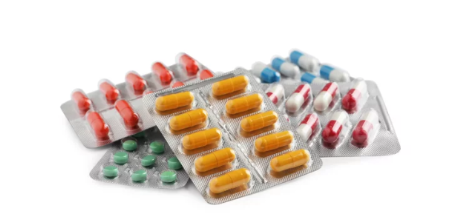
- Bottles. Plastic or glass bottles are also popular, especially when the medicine is stored in larger quantities. Bottles usually use an induction seal to prevent tampering and leakage.
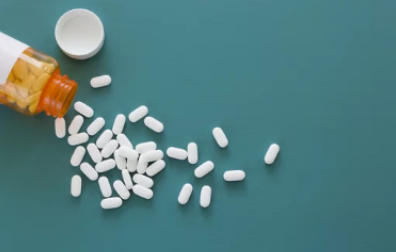
- Sachets and strip packs. Some powders and granules are packed in sachets or strip packs. They are easy to carry, often used for single-dose packaging, such as oral rehydration salts.
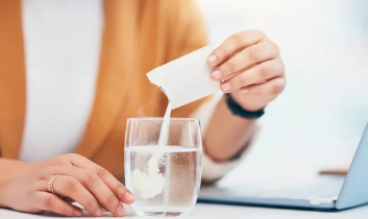
Packaging for liquid dosage forms
Liquid medicines include syrups, oral solutions, drops, injections, etc. Since these products can be sensitive to light, air, and contamination, their packaging must keep them stable and sterile. It contains
- Bottles. They offer strong protection against gases and moisture. Amber-colored glass bottles are often used when the medicine is sensitive to light.
- Ampoules. Ampoules are small and sealed glass containers used for injections. They are single-use and opened by breaking the neck of the container. Ampoules are usually used when the medicine must stay sterile.
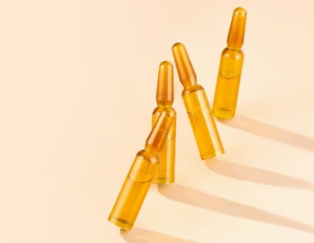
- Vials. These containers hold sterile liquids for injections. They may be single-dose or multi-dose.
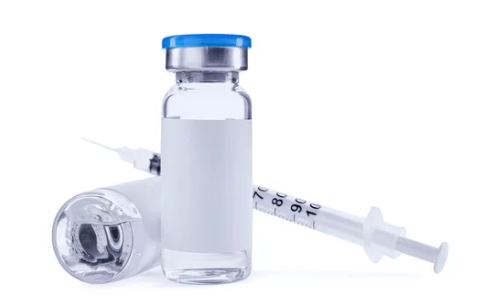
Packaging for semi-solid dosage forms
Semi-solid products are thicker than liquids but softer than solid tablets or capsules. They contain cream, ointment, gels, pastes, etc. Common packaging solutions are
- Tubes. They are the most common packaging for creams and ointments. The product is dispensed in small amounts and used by squeezing.
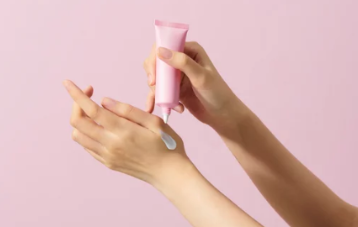
- Jars. Jars are sometimes used for thicker creams and ointments. They usually come with screw caps. While jars are convenient for products in larger amounts, they carry a higher risk of contamination. Because the content is exposed each time the jar is opened.
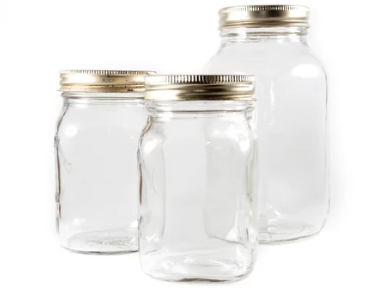
Packaging for inhalers and aerosols
Inhalers and aerosols are special dosage forms. They are used mainly for respiratory conditions such as asthma or chronic obstructive pulmonary disease (COPD). Their packaging is more complex. It not only protects the medicine but also controls how the dose is delivered.
- Metered-Dose Inhalers (MDIs). MDIs consist of a pressurized canister filled with medicine and propellant, placed inside a plastic holder with a mouthpiece. Each press of the inhaler releases a fixed dose of medicine in aerosol form.
- Dry powder inhalers (DPIs). DPIs deliver the medicine in dry powder form, without the need for a propellant. The packaging can hold the powder in different ways, such as capsules, reservoirs, etc.
- Aerosol sprays and foams. Aerosols are pressurized containers that release medicine as a spray, foam, or mist. They keep the medicine stable under pressure and deliver consistent doses.
Secondary packaging
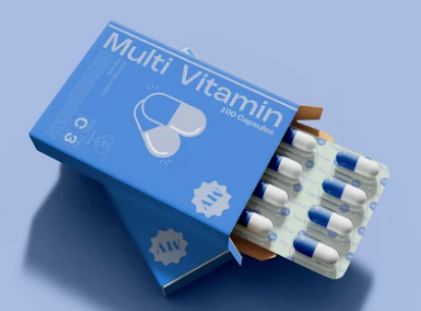
This packaging holds one or more primary packs together. It is important to show information, branding, and handling. Secondary packaging also helps protect the primary pack from physical damage like scratches and pressure. In addition, it makes the product easier to store in pharmacies, hospitals, or at home. Common secondary packaging includes
Cartons are popular secondary packaging. They could contain a number of blister packs for storage and transportation. Many pharma packaging manufacturers use boxes to place bottles and vials.
Tertiary packaging
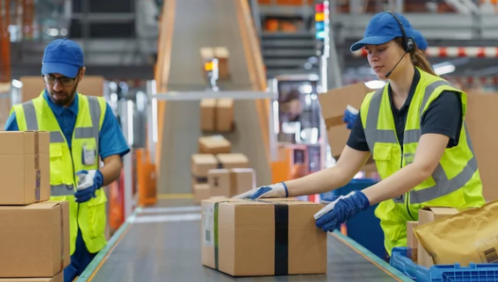
Tertiary packaging is used for bulk transport and storage. It is the outer layer that combines many secondary packaging into corrugated boxes, crates, or pallets. Also, it includes many strapping materials, such as shrink film、straps、bubble wrap. This type of packaging ensures the products remain safe during transport and reduces the risk of crushing or damage.
Tertiary packaging also makes loading and unloading more efficient in the supply chain. They ensure that medicines reach distributors, pharmacies, and hospitals in good condition.
Five common types of packaging materials
There are many materials to be used for pharma packaging. Each has unique properties to suit different types of medicine. Here are some examples for your reference.
Glass
Glass is one of the oldest and most reliable materials for pharmaceutical packaging. It won’t react with medicines and provides strong protection against gases and moisture. Glass is common in bottles, ampoules, and vials. Its main drawbacks are heaviness and the risk of breakage. But it remains the preferred choice for many sterile or injectable medicines.
Plastics
Plastic is widely used because it is light, durable, and flexible in shape. Moreover, it is usually cheaper to produce and ship than glass. There is a wide range of plastics for you to choose from.
| Plastic type | Properties | Uses |
| PE | It is resistant to moisture, but not completely gas-tight. | Bottles for syrups, tablets, capsules, and softgels. |
| HDPE | It features good strength, an excellent moisture barrier, and resistance to chemicals. | It is used for bottling creams and ointments. |
| PP | It is resistant to high heat and chemicals. | Many caps, closures, and blister pack trays are made of PP. |
| PET | It is clear and lightweight, and it features a better barrier than PE. | Transparent bottles for syrups, tablets, and capsules. |
Aluminum
Aluminum is often used in blister packs, strip packs, and tubes. It provides an excellent barrier against light, air, and moisture. In tubes, aluminum also protects semi-solid products like creams and ointments from contamination. Aluminum packaging is easy to handle, but it needs to be properly sealed to prevent damage during use.
Paper and cardboard
Paper and cardboard are mainly used for secondary and tertiary packaging. They provide space to print product information such as product name, instructions, and expiry date. Cardboard cartons protect blister packs, bottles, or tubes from physical damage and make handling easier.
Laminates and foils
Laminates are made of multiple layers of plastic, paper, or aluminum. They are commonly used in sachets, pouches, and blister pack seals. Laminates and foils act as strong barriers to moisture, gases, and light. So they are suitable for sensitive products like powders, granules, and single-dose creams.
How to choose a suitable packaging for your pharmaceutical products?
Product properties
The physical and chemical properties of the medicine decide the type of packaging. For example, light-sensitive liquids may require amber glass bottles. Then they could stay stable and effective. Their properties directly affect the choice of material and container.
Compatibility
More importantly, packaging must not react with the medicine. Some plastics may absorb active ingredients or allow migration of chemicals into the product. It will spoil medicine or even cause damage. Many manufacturers will conduct compatibility testing. It ensures that the medicine and the packaging material remain safe and effective together.
Regulatory requirements
Packaging materials and designs must meet the standards set by health authorities like the FDA. This includes requirements for sterility, labeling, tamper resistance, and traceability. Clear space must be available for printing product details such as dosage instructions, batch number, and expiry date.
Sustainable packaging
According to Grand View Research, the global market for sustainable pharmaceutical packaging was valued at USD 87.24 billion in 2023. It is expected to grow to USD 220.39 billion by 2030. It means more customers focus on environmentally friendly packaging. So when choosing packaging materials, you may consider recyclable plastics or bio-based polymers. These materials help reduce waste and cut down carbon emissions.
FAQ
Can pharmaceutical packaging be customized for any drug?
Yes. Customization supports size, material, labeling, or pattern design. However, all customized packaging must still meet safety, stability, and compliance standards.
How to find pharmaceutical packaging companies near you?
You can search for them in online business directories, industry platforms, or trade shows. It is necessary to check certifications, product range, and customer reviews to make a choice.
You can also contact us to get packaging equipment. We offer various types of packing machines for the pharma, food, and cosmetics industries.
What are the regulations governing pharmaceutical packaging?
It depends on the countries. In the United States, the FDA sets standards under the Code of Federal Regulations (CFR). In Europe, the EMA follows EU directives and Good Manufacturing Practice (GMP). Other regions have their own health authorities, such as NMPA in China or MHRA in the UK